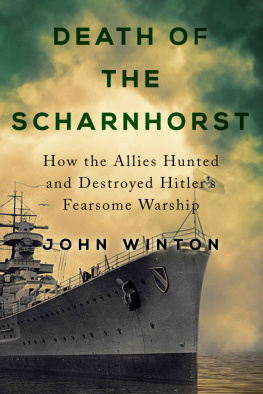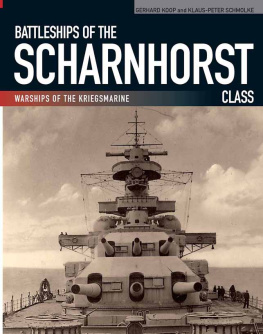
This edition is published by PICKLE PARTNERS PUBLISHINGwww.picklepartnerspublishing.com
To join our mailing list for new titles or for issues with our books picklepublishing@gmail.com
Or on Facebook
Text originally published in 1956 under the same title.
Pickle Partners Publishing 2015, all rights reserved. No part of this publication may be reproduced, stored in a retrieval system or transmitted by any means, electrical, mechanical or otherwise without the written permission of the copyright holder.
Publishers Note
Although in most cases we have retained the Authors original spelling and grammar to authentically reproduce the work of the Author and the original intent of such material, some additional notes and clarifications have been added for the modern readers benefit.
We have also made every effort to include all maps and illustrations of the original edition the limitations of formatting do not allow of including larger maps, we will upload as many of these maps as possible.
THE SINKING OF THE SCHARNHORST
BY
CORVETTE-CAPTAIN FRITZ-OTTO BUSCH
A Factual Account from the German Viewpoint
translated from the German by
Eleanor Brockett and Anton Ehrenzweig
TABLE OF CONTENTS
Contents
TABLE OF CONTENTS
REQUEST FROM THE PUBLISHER
DEDICATION
TO DEAD OF THE BATTLESHIP SCHARNHORST
PLANS
Sinking of the ScharnhorstCruiser Operations 0840-1500 hours
Sinking of the ScharnhorstCruiser shadowing and Battleship action 1500-1900 hours
Sinking of the Scharnhorst1845-1945 hours
The above plans are reproduced by permission of the Controllers of H.M. Stationery Office from Admiral Sir Bruce Frasers despatch on the sinking of the Scharnhorst, published as a supplement to the London Gazette on the 5 August 1947.
FOREWORD
ON 7 January 1939, the day the Scharnhorst was commissioned, her commanding officer, Captain (as he then was) Ciliax, told his officers: The important thing to remember is thisthat the whole life and character of this ship will rest upon the spirit which you officers are able to inculcate in your men. No one could have foreseen how literally true these words were to prove.
In the few months still left before the outbreak of war, the newly assembled crew had to be shaped into a team; under the impact of the manifold operations in which the battleship was subsequently engaged, operations successfully completed in spite of often serious damage, there developed among the men a spontaneous comradeship of rare quality, the true team spirit. Every man of the two thousand who formed the ships complement was inspired by one conviction, that their ship sailed under a lucky star.
The author has made full use of all factual material available from both British and German sources and has produced a vivid account of the action off North Cape on 26 December 1943, when the proud ship succumbed to a vastly superior opponent. The exemplary conduct and unflinching devotion to duty of every man on board the Scharnhorst were in accordance with the highest traditions of the German Navy.
HELMUTH GIESSLER (Captain, retired)
Navigating Officer and First Officer of the Battleship Scharnhorst from 1938 to 1943
Wilhelmshaven, October 1951
INTRODUCTION
THE sinking of the Scharnhorst is to many people little more than a dim memory; few know what actually happened, for owing to the strict censorship of wartime the details were not published at the time. As, however, the events of that dark Arctic Christmas of 1943 will occupy an important place in the history of naval warfare and as their full significance can now be properly assessed, I have felt justified in telling for the first time the full and authentic story of the sinking of this valiant ship.
In 1940 the names of the German battleships Scharnhorst and Gneisenau were appearing with some frequency in the British Press. The aircraft-carrier Glorious had been sunk and the Scharnhorst, whose name had first been in the news in connexion with the sinking of the auxiliary cruiser Rawalpindi, had again taken part in the action, as German sources also reported. Unfortunately no survivors could be saved either from the aircraft-carrier or from her two escorting destroyers Acasta and Ardent. After this incident nothing was heard of the Scharnhorst for a while.
Then suddenly, in the spring of 1941, her name was in the news once more. Merchant shipping was being sunk in the Atlantic, and British naval and air forces searched for the German battleship for months on end. But the Scharnhorst had disappeared somewhere in the vast expanses of the Atlantic, swallowed up no doubt by the ocean mists or hidden in the heavy swells which ploughed the Atlantic at that time of the year.
Then came the news that the Scharnhorst and Gneisenau had put into Brest. Cornered at last! The British were confident that the RAF would seek them out and destroy them. Bombs crashed down on the French Atlantic port as the RAF went into action, sending over spotting planes and bombers, while all England waited for the news of the battleships destruction. But it did not come. The Scharnhorst was too well concealed. Trees and shrubs grew on her decks, and camouflage netting intertwined with leaves obstructed the view from the air. True, she did not go completely unscathed at La Pallice, but the hits the RAF were able to score caused no serious damage. The RAF persevered for months, but in vain. The ship lay well hidden, preparing for future action and waiting her chance. Then one day the anchorage lay deserted.
It was on 12 February 1942 that the news broke: German naval units in the ChannelScharnhorst, Gneisenau and Prinz Eugen! The Admiralty was astounded, incredulous.
Everyone wondered how they could possibly have left harbour unnoticed. All the British forces which were available were immediately thrown into action, but these were not formidable, for the naval units most needed lay too far north and it was impossible for them to intervene in time. One or two torpedo-boats and a few out-of-date torpedo-planes and bombers engaged the German units. The coastal artillery fired. In vain. The break-through succeeded. Once more, in company with the destroyers, torpedo-boats, E-boats, mine-sweepers and patrol vessels which covered the break-through in co-operation with the Luftwaffe, this almost legendary ship, the Scharnhorst, had slipped from the enemys grasp.
A little less than two years after this, the BBC broadcast the news that the Scharnhorst had been sunk by British naval forces 60 miles NW of North Cape. It happened at a quarter to eight on the evening of December 26th, Boxing Day 1943.
IBIOGRAPHY OF A BATTLESHIP
TO the sailor a ship is a living thing with a life and character of its own, and there are ships that seem sombre and even malevolent, just as there are people whose personalities lack vitality and warmth. The Scharnhorst definitely had a soul. Furthermore, she was beautiful, and she sailed with that wonderful, gently swaying motion characteristic of a battleship in a following sea. She seemed always a happy ship, and her spirit pervaded the whole crew, giving rise to a certain fierce pride which was felt by all old Scharnhorst men from the Captain down to the humblest rating.











